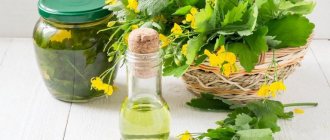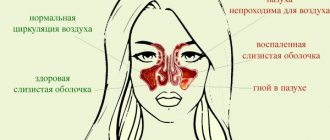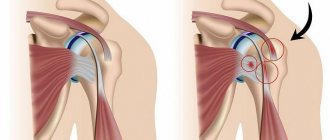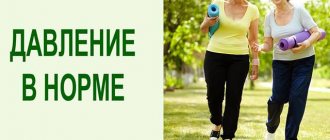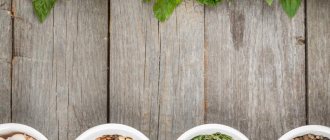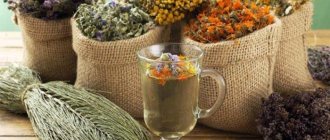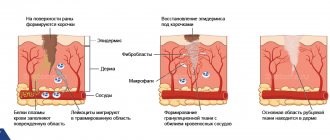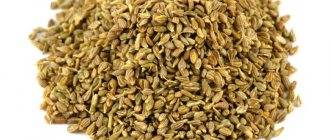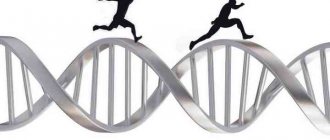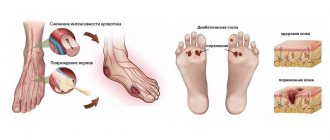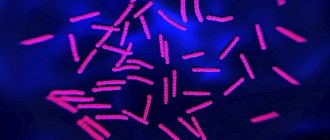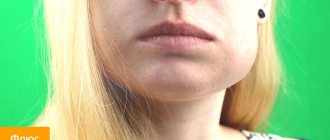Modern women, as well as representatives of the stronger sex, probably dream of smooth and pleasant-to-touch skin, “flavored” with a light, healthy glow. But does blush always indicate health? Those who have ever encountered such an unpleasant problem as rosacea are unlikely to answer this question in the affirmative. According to statistics, rosacea or, in other words, telangiectasia (a term that is used in most cases in general medical practice) is one of the most common reasons for visits to cosmetologists and dermatologists. What is rosacea, how dangerous to health can this skin defect become and how to get rid of it? We asked these and other questions to Nadezhda Zhurbina, a dermatovenerologist and cosmetologist at the Novoklinik network of Aesthetic Medicine and Cosmetology Centers .
What is rosacea and what are its signs and symptoms?
Cuperosis is a stable local expansion of individual small capillaries of the skin, accompanied by thickening and a pronounced decrease in the elastic qualities of the walls of blood vessels, as well as blood stagnation. This term is most often used in cosmetology. As for the general medical term “telangiectasia,” it was first introduced back in 1807 and is literally translated as “dilated tip of the vessel.” The expansion of skin capillaries in this pathology is observed 5 or more times - up to 100 microns, whereas normally the diameter of the vessels should not be higher than 20 microns. This skin defect can occur in patients of any gender and age, but is most often observed in people over 40 years of age.
Cuperosis has four stages, each of which has certain symptoms:
Stage 1 - erythema (irritation of the skin on the face). At this stage, a small number of capillaries become visible.
Stage 2 - dilated capillaries unite over time, forming a network. At the same time, they acquire a more intense color.
Stage 3 - the so-called congestive erythema. This stage is characterized by individual or multiple telangiectasias, and the network of united dilated capillaries is localized to a greater extent in the middle part of the face.
Stage 4 - capillaries are visible even more clearly, in addition, vessels located on the entire surface of the face are added to the pathological process. The result of a general spasm of the capillaries becomes visible areas of local whitening.
What is rosacea?
Diseases or defects of the skin develop for various reasons, sometimes due to malfunctions of a particular system or organ, sometimes due to improper care. People with very sensitive skin are at risk; for them, any, even minor, exposure can lead to vascular damage.
In fact, rosacea can be considered a disruption of the vascular system when a malfunction occurs in the blood circulation. In some cases, formations may be small, isolated and unnoticeable, but if the process is started, the lesion gradually becomes larger.
Those with sensitive skin experience symptoms of rosacea such as burning, itching, redness and tingling of the skin at the slightest change in air temperature, exposure to cosmetics or even touch. It all starts with the appearance of small red spots on the forehead or chin, which over time turn into larger purple lesions. This indicates telangiectasia or dilatation of small vessels.
You may be interested in: How to tighten pores on your face
Many women do not know what rosacea is and how to prevent its occurrence. You can achieve good results, you just need to monitor your diet, lifestyle and use only proven and high-quality cosmetics.
On which parts of the body does rosacea most often occur?
“In most cases, rosacea is noted on the face, nose and neck, mainly in the cheekbones and on the wings of the nose,” says Nadezhda Zhurbina. — In general, this pathology does not affect a person’s health, but it significantly spoils the overall quality of life, since it is a very pronounced defect of a cosmetic nature. Moreover, in some cases, the capillary loops have such a distinct color that it is almost impossible to eliminate it through cosmetic correction.”
Cosmetic care: TOP 7 best products
According to reviews, treatment of rosacea at home must be combined with proper care. For cleansing and nutrition, film masks, thin ones with alcohol, menthol, aloe, and eucalyptus are not used.
Masks with cosmetic clay and exfoliation with scrubs are not recommended. Our priority is cosmetic products for sensitive skin.
- Cream "Doctor Taffy" with natural ingredients.
- Products from the Alcina line with horse extract, cental, ruscus.
- Anti-rosacea cream "Sensibio AR Cream" from Bioderma.
- Therapeutic French cosmetics “Apaisance Fluide Anti-Rougeurs”.
- “Stop rosacea” series, including tonic, gel and cream.
- "Vitaforce C Skin Complex" improves tissue regeneration and trophism.
- Cream "Bark" with vitamin C, rutin.
A green tea tonic is used, and the face is often irrigated with micellar water.
Stimulates blood flow with a light stroking massage and exercises to strengthen the facial muscles.
Are there characteristic concomitant diseases with rosacea?
The food triggers associated with rosacea are similar to those present with rosacea.
“These are hot tea and coffee, strong alcohol, food products containing capsaicin (spices, hot peppers, etc.) and cinnamaldehyde (chocolates, tomatoes, citrus fruits and other products),” Nadezhda Zhurbina lists. “In addition, by studying the etiological factors and assessing the clinical manifestations of the disease, it is quite possible to conclude that this condition is similar to rosacea.”
Couperosis and rosacea actually have many common features: many experts even believe that rosacea represents the next stage in the development of rosacea. However, with rosacea, both small and large capillaries are affected, while with rosacea, only small ones are affected. At the same time, manifestations of rosacea - especially early ones - indicate a general predisposition of the patient to vasodilation. This increases the risk of certain “related” problems occurring in the future - from varicose veins to stroke: during the treatment of rosacea, the prevention of these diseases should also be given increased attention.
Nutrition rules
If you successfully get rid of the external manifestations of rosacea, it is recommended to adhere to certain nutritional rules; this will help normalize metabolic processes in the skin and strengthen the vascular walls, which will subsequently reduce the risk of reappearance of the vascular network.
Table: what foods are advisable and not advisable to consume for rosacea
| Healthy foods | Unwanted Products |
| Green tea | Red meat |
| Omega-3 fatty acids (seafood, fish oil, flaxseed oil) | Semi-finished products |
| Olive oil | Animal fats |
| Protein (chicken, eggs, nuts, etc.) | Sugar and sweets |
| Dairy and fermented milk products | Coffee |
| Fresh fruits and vegetables | Alcohol |
| Food is prepared by boiling, baking or steaming | High carbohydrate foods (bread, pasta, buns, etc.) |
| Acidic foods (oranges, tomatoes, vinegar, etc.) | |
| You should not eat fatty, spicy, fried, hot, or too salty foods. |
In addition, to improve the condition of the skin and blood vessels, it is recommended to establish water balance in the body: drink at least two liters of water per day.
Vitamins
To combat rosacea, it is recommended to especially focus on taking three vitamins.
Table: vitamins for rosacea
| Vitamin | Properties | What products contain |
| C (ascorbic acid) |
|
|
| TO |
|
|
| R |
|
|
Vitamin P is a group of bioflavonoids, including ascorutin, citrine, catechins, etc. These substances prevent the destruction of ascorbic acid in the body.
Photo gallery: products that help with rosacea
Vitamin C restores vascular tone and evens out skin color
Vitamin K strengthens the walls of blood vessels and reduces their permeability
Vitamin P, especially when combined with vitamin C, reduces capillary fragility
What treatment methods and remedies for rosacea exist and what are the features of their use?
As with the treatment of most other diseases, only by using all the best from rosacea, you can achieve the desired result. After all, the key therapy methods used during treatment complement each other and affect the body at different levels. And of course, the sooner treatment is started, the sooner it will achieve results, and if treatment is started in a timely manner, the effect will be more pronounced.
As trivial as it may seem, specialized nutrition is the basis for the complex treatment of rosacea. The diet is designed to minimize spicy and hot foods in the diet, and also not to get carried away with marinades, yeast products, chocolate, tea and coffee, alcoholic beverages, etc.
Everyday skin care is a rule that should be followed by everyone who wants to get rid of rosacea as soon as possible and maintain the results for a long time.
“To remove rosacea, it is recommended to use specialized products that do not destroy the protective layer of the skin, and also do not contain abrasive substances or alcohol,” says our expert. “Quite often, creams for rosacea include ginkgo, collagen, green tea, grape seed oil, etc.”
In addition, it is not recommended to wipe your skin with a rough towel or apply scrubs and other abrasive products to it, and to clean your facial skin, it is best to seek the help of a cosmetologist who has experience working with skin prone to rosacea. He will select professional care products personally for you.
Before going outside, it is necessary to apply to the affected skin products that protect against wind and frost, as well as ultraviolet rays - depending on the weather and time of year. Men are recommended to switch to shaving with an electric razor.
Vitamin therapy is another important component of the complex treatment of skin rosacea. It includes both taking nutritional supplements and using special cosmetics with ingredients such as flavonoids (vitamin P), which increase skin elasticity, vitamins C and K, which help strengthen the walls of blood vessels and promote the formation of new collagen. However, the above methods only partially solve the problem. More advanced cases should be examined by a specialist; only he can prescribe you a full course of treatment for telangiectasia.
Ways to combat rosacea on the face
Many women, faced with manifestations of rosacea on their faces, do not pay too much attention to them, but only mask the problem. However, later this disease may progress, and then to eliminate the problem you will have to spend more time, effort and money than if treatment had started in a timely manner. Therefore, it is recommended to consult a dermatocosmetologist as soon as possible to find out the causes of rosacea, determine the severity and prescribe a treatment regimen. The duration of therapy depends on each specific case.
To achieve the best result in the fight against rosacea, consultation with a dermatocosmetologist is required.
Home treatment
Treatment of rosacea at home gives positive results. There are many recipes that will help improve microcirculation and relieve inflammation and redness.
Table: folk and pharmacy remedies in the fight against rosacea
| Means | Recipe | How to use | Exposure time | Frequency of application | Well | Effect |
| Apple vinegar |
| Apply lotions using cotton pads to problem areas | 10 minutes | Daily | No restrictions | Reduce redness |
| Aloe | Extract juice from leaves | Application to skin | – | Twice a day | 10 days | Reducing redness and inflammation, strengthening the walls of blood vessels |
| Chamomile | 2 tbsp. l. Brew dry chamomile (or 2 filter bags) with boiling water. Let the broth cool. | Apply lotions using cotton pads to problem areas | 15 minutes | 2–3 times a week | No restrictions | Reduce redness and irritation |
| Ginger |
| Apply lotions using cotton pads to problem areas | 1–2 minutes | Twice a day | 1 month | Renewal of skin cells, reduction of beauty and strengthening of blood vessels |
| Potato | Use a whole potato slice or grate it and squeeze out the juice. | Wipe problem areas | 2–3 minutes | Daily | 1 month | Reducing redness and whitening skin |
| Herbal collection No. 1 |
| Apply lotions using cotton pads to problem areas | 5 minutes | Twice a day | No restrictions | Strengthening the walls of blood vessels, fighting inflammation, reducing redness |
| Herbal tea No. 2 |
| Apply lotions using cotton pads to problem areas | 5 minutes | Twice a day | No restrictions | Strengthening the walls of blood vessels, restoring blood circulation, reducing redness |
| Hydrogen peroxide (3% solution) | Using hydrogen peroxide in its pure form | Apply lotions using cotton pads to problem areas | 10–15 minutes | 2 times per week | 2 months | Anti-inflammatory and whitening |
| Troxevasin | Using the drug Troxevasin in its pure form | Application to skin | – | Twice a day | 1 month | Strengthening the walls of blood vessels and restoring blood circulation |
| Heparin ointment | Use of the drug Heparin ointment in its pure form | Application to skin | – | Twice a day | 1 Week | Strengthening the walls of blood vessels, restoring blood circulation, and reducing inflammation and swelling |
Ginger promotes the healing of microtraumas, increases skin elasticity and improves complexion
Table: masks against rosacea
| Mask | Recipe | Exposure time | Frequency of application | Well |
| Fermented milk | 1 tbsp. l. mix low-fat cottage cheese with 1 tsp. cream. | 20–25 minutes | 2 times per week | 1 month |
| Egg | Beat the egg white a little, add 2-3 drops of lemon juice and 1/2 tsp. olive oil. | 20–25 minutes | 2 times per week | 3 weeks |
| Banana | Mash the banana, add 1 tsp. heavy cream and 2-3 drops of lemon juice. | 20–25 minutes | 2 times per week | 1 month |
| Ascorutinic | In 1 tbsp. l. cooled, strongly brewed green tea, add 5 crushed Ascorutin tablets and 1 tsp. white clay. | 20 minutes | 2 times per week | 2 months |
| Clay | 1 tbsp. l. white clay dilute 1 tbsp. l. strong chamomile decoction. | 15–20 minutes | 2 times per week | No restrictions |
| Aspirin | Grind 2 aspirin tablets and add 1 tsp. kefir | 10 minutes | 2 times per week | 3 weeks |
| Yagodnaya | Grind 1 tsp. fresh strawberries, raspberries and sea buckthorn. Add 1 tbsp to the berries. l. potato starch. | 20 minutes | 1 time per week | 3 weeks |
Homemade masks effectively fight rosacea and reduce the likelihood of side effects
Oils
Along with other home remedies, the use of oils, both basic and essential, is widespread. In addition to affecting the vascular pattern, oils help get rid of inflammation, nourish and moisturize the skin, which significantly improves the appearance of the skin.
Due to their high content of fatty acids, essential and base oils restore the elasticity of blood vessels and reduce redness on the skin.
Table: base oils against rosacea
| Oil | Effect on the skin |
| Grape seeds | Strengthening the walls of blood vessels, reducing inflammation |
| Sesame | Reduces inflammation and redness, improves complexion, protects against external environmental influences |
| Walnut | Toning blood vessels, restoring cellular respiration |
| Milk thistle | Reducing inflammation, protecting against external environmental influences |
| Tamanu | Toning blood vessels and strengthening their walls, restoring blood circulation |
| Wheat germ | Restoring cellular respiration, strengthening vascular walls |
Table: essential oils against rosacea
| Oil | Effect on the skin |
| Cypress | Strengthening and toning blood vessels, reducing redness |
| rosemary | Restoring blood circulation and metabolic processes in the skin, toning blood vessels |
| Geraniums | Increasing the speed of epidermal regeneration, evening out complexion, whitening |
| Neroli | Reducing redness, restoring metabolic processes in the skin |
| Blue daisies | Reduces inflammation and redness, soothing effect |
| Roses | Improvement of complexion, constriction of blood vessels, restoration of blood circulation |
If your skin is very sensitive or has vascular patterns, you should avoid using anise, clove, tea tree, cinnamon, peppermint and eucalyptus oils, as they are quite harsh.
There are many recipes for antivascular oil mixtures. Over time, having understood how your skin reacts to one or another component, you can create your own compositions. In this case, it is very important to maintain approximate proportions, since an excessive amount of essential oils in the mixture can have the opposite effect: the skin will become red and inflamed, and the blood vessels will stand out more. There are no restrictions on the length of the course when using oils, but visible improvements will be noticeable no earlier than after 3 weeks of using the anti-rosacea mixture. The oil composition is applied to a cleansed, damp face along massage lines at least once a day. The recipe is simple: you need to mix the essential and base oils indicated in the recipe and place the mixture in a dark glass bottle. Store at a temperature no higher than +25 degrees for no more than 12 months.
Table: recipes for oil mixtures against rosacea
| Oil mixture No. 1 | Oil mixture No. 2 | Oil mixture No. 3 | Oil mixture No. 4 | Oil mixture No. 5 |
| 2 tbsp. l. Mix grape seed oil (or milk thistle) with 2 drops of rosemary essential oil. | 6 tbsp. l. Mix wheat germ oil (grape seed) with 2 drops of cypress oil and 2 drops of geranium ether. | In 2 tbsp. l. sesame oil add 1 drop each of blue chamomile and rose oil. | Mix 2 tbsp. l. walnut and tamanu oils, add 3 drops each of cypress, geranium and rosemary esters. | Mix 1 tsp. grape seed and walnut oils and add 3 drops of cypress essential oil. |
To prevent oxidative processes from spoiling the oil mixture, it must be stored in a dark glass bottle.
Video: treatment of rosacea at home
Treatment of rosacea using alternative medicine and massage
It is not advisable to use unconventional methods on your own, because self-medication may not produce results or even cause harm. A good specialist will be able to effectively cope with the problem, since the treatment regimen is determined individually in each case.
Alternative medicine: hirudotherapy and snail therapy
Hirudotherapy and snail therapy are carried out in special centers engaged in alternative medicine. Leeches are used in medicine to restore blood circulation and lymphatic drainage. This also helps in the treatment of rosacea. At the same time, hirudotherapy helps not only to get rid of the manifestations of the vascular pattern, but also to strengthen the walls of the capillaries, which prevents the reappearance of rosacea. During the treatment of this disease, in addition to using leeches directly on the affected areas, they are also sometimes placed in the liver area. To combat rosacea, it is recommended to carry out hirudotherapy at least once a year, ideally twice.
Hirudotherapy eliminates blood stagnation and improves local blood supply, however, it is recommended to carry out this procedure under the supervision of a doctor
As you know, snail mucin - snail mucus - is very beneficial for the skin. In the case of rosacea, snail therapy can improve regeneration and blood circulation, strengthen the walls of blood vessels and relieve inflammation.
Moving across the face, snails secrete mucus, which improves blood microcirculation and strengthens the walls of blood vessels
Table: facial massage for rosacea
| Type of massage | Short description | At what age can the procedure be performed? | Indications | Contraindications | Well |
| Classical | Kneading, vibration, patting and stroking movements that are performed along massage lines. This technique strengthens the walls of blood vessels and accelerates metabolic processes in the skin. Classic massage is performed using oil. | 25 years |
|
| 10–30 procedures |
| Plastic | During the massage, active, patting and pressing movements are performed. This technique allows you to tighten the oval of the face and improve blood circulation, lymphatic drainage and skin regeneration. Plastic massage is performed on dry skin or talcum powder. | 35 years |
|
| 15–30 procedures |
| European | Light pressure and stroking, without putting too much pressure on the skin. This technique helps relieve muscle stress, restore cellular respiration and improve blood circulation. European massage is performed using oil. | 25 years |
|
| 10–30 procedures |
In some cases, a facial massage performed by a competent specialist will help in the fight against rosacea.
Treatment by a dermatocosmetologist
Today, in order to quickly get rid of the manifestations of rosacea, it is recommended to visit a dermatocosmetologist. He will assess the extent of the disease and offer effective therapy, thanks to which you can get rid of the manifestations of the vascular pattern on the face.
Table: procedures for the treatment of rosacea on the face, carried out by a dermatocosmetologist
| Procedure | Short description | Advantages | Flaws | Contraindications | Well |
| Laser treatment | Under the influence of the laser, the vessels collapse. Typically, neodymium, alexandrite and diode types of laser are used. |
| Price. |
| Depends on each specific case. A small vascular pattern is removed in 1–2 procedures. |
| Electrocoagulation | A needle-shaped electrode is inserted into the affected vessel, and with the help of an electrical impulse the vessel is destroyed. First, large vessels are removed, and after a few days - small ones. |
|
|
| Depends on each specific case. Mostly at least two. |
| Photorejuvenation | A special light is applied to the skin. Thanks to this, active metabolic processes are launched in the skin, blood circulation is restored, vascular walls are strengthened and the synthesis of collagen and elastin is activated. |
|
|
| Mostly 3–6 procedures |
| Ozone therapy | Using a microneedle, an ozone-oxygen cocktail is injected into the vessel. This helps restore blood flow and narrow the vessel, causing the vascular network to disappear. Ozone therapy is also used in the fight against wrinkles, age spots and swelling. |
|
|
| 6–15 procedures |
| Mesotherapy | In each individual case, the doctor prescribes a cocktail of certain substances; vitamins, micro- and macroelements, collagen, elastin and others. This cocktail is injected into problem areas. Mesotherapy helps restore blood circulation, strengthen the walls of blood vessels and accelerate tissue regeneration. |
|
|
| Depends on each specific case. Mostly 4–5 procedures. |
| Biorevitalization | Subcutaneous injections of hyaluronic acid are performed. This starts metabolic processes in the skin, improves microcirculation and lymphatic drainage. |
|
|
| 1–2 procedures |
| Microcurrent therapy | Using a device equipped with electrodes, microcurrents are applied to the skin. |
|
|
| 8–12 procedures |
| Peelings | Delicate types of peeling are recommended for skin with rosacea:
They act quite gently, but are very effective: they help speed up regeneration, cleanse the skin of existing imperfections, improve blood circulation and lymph flow, and also moisturize the skin. |
| Possible redness and peeling after the procedure |
| Depends on each specific case. Mostly 4–5 procedures. |
Photo gallery: results of treatment of rosacea by a dermatocosmetologist
The laser beam, penetrating the vessel, glues it together, forming a clot, which prevents blood circulation
A needle-shaped electrode is inserted into the affected vessel, and under the influence of an electrical impulse it is destroyed
The photorejuvenation procedure has a comprehensive effect on the condition of the skin: eliminates age spots and dilated blood vessels, enhances collagen production and fights wrinkles
Ozone therapy helps restore blood flow and narrow the blood vessel, due to which the vascular network disappears
Mesotherapy helps restore blood circulation, strengthen the walls of blood vessels and accelerate tissue regeneration
Biorevitalization starts metabolic processes in the skin, improves microcirculation and lymphatic drainage
Using a device equipped with electrodes, microcurrents are applied to the skin. This procedure improves blood circulation and lymph flow. Milk, almond, azelaine and enzymatic peelings are quite gentle, but very effective
Video: treatment of rosacea with a doctor
It is worth understanding that today there are no procedures that would be able to permanently eliminate the manifestations of rosacea. In order for this disease to enter the stage of stable remission, after effective cosmetic procedures, it is necessary to eliminate factors that provoke the appearance of vascular patterns on the face and carry out careful skin care.
Contraindications for rosacea
For rosacea it is not recommended:
- be exposed to sudden temperature changes (contrast washing and showering, using ice cubes, etc.);
- visit the bathhouse, sauna, solarium, beach;
- neglect sun protection - daily use of cream with a high SPF factor;
- use aggressive cosmetics (water-based clay masks, scrubs, alcohol-containing lotions, strong peelings, etc.);
- to be nervous;
- drink alcohol and smoke.
What basic cosmetic procedures are used to treat rosacea?
If telangiectasia is severe, an impressive arsenal of therapeutic and cosmetic procedures comes to the rescue, which are selected based on the patient’s individuality. These primarily include:
Electrocoagulation. This is cauterization of blood vessels using a hair electrode. In this way, it is possible to eliminate even quite obvious manifestations of the disease. However, in some cases, electrocoagulation leaves scars or pigment spots on the skin.
Mesotherapy and biorevitalization. This method is based on microinjections of drugs that strengthen capillary walls and have a positive effect on blood microcirculation. This procedure can be performed for both treatment and prevention purposes.
Treatment of rosacea with laser. Laser therapy for rosacea is the cauterization of a pronounced vascular pattern using a laser beam. Thanks to its excellent results and almost complete absence of pain, laser is one of the most popular assistants in the treatment of telangiectasia.
Phototherapy. Treatment with light flashes is excellent for treating large-scale telangiectasias, and in addition, eliminates pigment spots, acne and other skin defects.
Therapeutic plastic massage. As opposed to traditional massage, which is harmful for telangiectasia, this procedure successfully copes with the manifestations of the disease, and in addition, is used for prevention.
The light will cure
If the vascular network has already formed, it will not be possible to get rid of it using home remedies, so you will have to resort to the help of a cosmetologist.
To eliminate rosacea, laser treatment or phototherapy is used. In both cases, the damaged vessel is exposed to light. Light energy reacts with the pigment in the vessels, is converted into heat and seals the damaged capillary.
Article on the topic
In facts and figures: laser therapy was recognized in the USSR in 1974. Laser and phototherapy do not lead to skin injuries, and their effect is noticeable immediately. The red mesh on the skin either disappears during the session, or the vessels change color and gradually become invisible over the course of a week. Immediately after the procedure, there may be slight redness of the skin and slight swelling, which will subside within one to two hours.
In most cases, it is possible to completely get rid of spider veins in one visit to a cosmetologist, but it happens that two or three procedures are required a week apart. The fact is that with a strong rush of blood to the face, blood flow can be restored even in a completely sealed vessel and the redness will again become noticeable. Then the capillary is clogged again.
Both laser and phototherapy enhance collagen production, increasing the elasticity of blood vessels, which means they not only relieve rosacea, but also serve to prevent it. And at the same time they improve complexion, rejuvenate and slightly tighten the skin.
Is it possible to do peeling for rosacea?
Chemical peels for telangiectasia are a rather controversial cosmetic procedure, because any third-party effect on the affected skin should be gentle and superficial so as not to disrupt blood microcirculation. However, if peeling is chosen correctly, it can have a beneficial effect on the skin. The most popular for rosacea are glycolic peeling, peeling with lactic acid, as well as retinoic, almond, enzyme and a number of other peelings, and the drugs used during this procedure are characterized by a reduced concentration of active acids or enzymes.
Removal of rosacea with laser
Beauty salons can help in the treatment of skin defects. Laser removal of rosacea is a modern way to quickly and reliably get rid of the appearance of vascular nodes. This technique is completely safe. The only drawback is the lack of a therapeutic effect; you can only get rid of external manifestations, but you cannot cure the problem itself in this way.
After the manipulation, redness of the skin may remain, but the next day all irritation goes away and the skin becomes clean.
The procedure goes like this. The doctor aims the beam at the affected area, when heated, the vessel is sealed, and a scattering of stars disappears. The process is painless.
Some specialists may suggest peeling for rosacea, but remember that if you have sensitive skin, it is undesirable to injure it even more. Proper cleaning can be carried out in the salon, but this should only be done by a competent specialist and in the case of the primary manifestation of the disease.
You may be interested in: Effective facial gymnastics for wrinkles
Are there preventive measures against rosacea and what are they?
An excellent preventative measure against rosacea is the above-mentioned diet (hot spices, hot foods, coffee and alcohol, etc. should be removed from the diet, and bad habits should be avoided). Preventive mesotherapy using vascular-strengthening drugs, taking vitamins C and P and herbal herbal remedies (horse chestnut, rose hips, etc.) are also appropriate.
Home skin care should be based on moisturizing and protecting it: essentially, a moisturizer will be the best cream for rosacea, and reviews from numerous patients who have experienced telangiectasia confirm this. At the same time, these products must be used indoors, and every time before going outside, you need to apply a protective cream.
Mesotherapy against rosacea
Tendency to vascular disorders is a chronic condition that requires constant support and prevention. As a single procedure, mesotherapy will be effective in the early stages of rosacea, but it is also recommended to be used in combination with other measures - hardware, cosmetic. The technique consists of injecting problem areas with specially selected meso-cocktails. The drugs are administered to a shallow depth according to a specific scheme. Thus, the active substances are delivered directly to the target - small subcutaneous vessels. Injection cocktails contain hyaluronic acid, amino acids, zinc, selenium, organic acids, rutin, vitamin C, plant extracts of butcher's broom, centella asiatica, horse chestnut, and ginkgo biloba. All these ingredients are designed to strengthen the capillary wall and reduce its permeability, improve tissue trophism and antioxidant protection, and increase the elasticity of blood vessels. The dermis, on which the density and structure of the connective fibers of the skin depends, is also targeted. The normal, non-stretched condition of the skin has a positive effect on the strength of the vascular network. After a course of seven to ten procedures, damaged vessels with a diameter of up to 0.5 mm usually completely disappear, and larger ones decrease in size and become less noticeable. Mesotherapy allows, if not completely avoiding problems with the vascular pattern, then delaying its appearance for a long time.
Causes and symptoms of rosacea
In dermatology, it is believed that the development of rosacea is hereditary. It is transmitted predominantly through the female line; most often, those with light and sensitive skin suffer from the problem, since their capillaries are close to the surface of the epidermis. Couperosis can occur due to the following reasons:
- chronic diseases of the circulatory system;
- liver diseases;
- hypertension;
- increased sensitivity and thinness of the skin.
There are also provoking factors that increase the risk of developing pathology. These include: changes in hormonal levels, frequent exposure to wind and snow, abuse of salty and spicy foods, aggressive cosmetic procedures.
The external manifestations of rosacea change as the problem develops. Main stages of the disease and characteristic signs:
- Minor redness appears in the area of the wings of the nose, lips and cheeks. They last from 10 minutes to 1-2 hours.
- A capillary network appears with every temperature and mechanical influence.
- Redness becomes longer lasting and pigmentation forms.
- The skin acquires a grayish tint and becomes sensitive to the effects. Inflammation develops and a rash appears on the cheeks and nose.
- The disease develops into rosacea with severe redness that does not go away, and papules, swelling and a bright red rash appear on the surface of the skin.
In the later stages, it is impossible to get rid of rosacea with cosmetics; the use of medications, hardware and physiotherapeutic procedures is required.
Home prevention of rosacea
In order to prevent the appearance of stars on the skin, you need to strengthen the blood vessels. Home remedies are quite suitable for this. Here are some recommendations to strengthen blood vessels and improve skin condition:
One of the most accessible remedies at home is a contrast shower. Alternating hot and cold water helps train the cardiovascular and respiratory systems. It is better to do this procedure in the morning. Rapid alternation of hot and cold water has a good effect on the health of blood vessels.- Food enriched with vitamins is beneficial. It is also necessary that the diet contains dishes containing microelements - copper, manganese, zinc.
- To prevent spider veins from appearing, you need to monitor your weight. Excess weight is a big burden on all organs.
- You need to limit salt. It retains fluid, which adversely affects the condition of the veins.
Physical activity is both treatment and prevention of rosacea. It is necessary that the exercises are not tiring.- It is necessary to combat constipation in every possible way.
- Avoiding stress is an important component in preventing spider veins.
So, overcoming spider veins at home, without the use of expensive medications, is quite normal. You can easily achieve healthy looking skin. A healthy lifestyle is the best companion for beautiful skin.
DO YOU STILL THINK THAT IT IS IMPOSSIBLE TO GET RID OF VARICOSE VARICOSIS!?
Types of the disease and how to recognize it
Spider veins appear on the surface of the cheeks, wings of the nose and in the chin area. On the forehead, a capillary network occurs in rare cases. The affected areas of the skin begin to change color from light pink to blue, depending on the severity of telangiectasia on the face. Before starting treatment, it is necessary to confirm the diagnosis.
Visually, several types of the disease are distinguished:
- linear, or sinusoidal;
- tree-like;
- star-shaped;
- spot-like.
Cuperosis develops gradually, so the dynamics of the disease are divided into 4 main stages. Each stage has characteristic symptoms.
| Stage of disease development | Signs of pathology |
| Stage 1 | The sensitivity of the skin of the cheeks, nose and lower jaw area begins to increase. The epithelium begins to turn red, and erythrosis develops. After the onset of rosacea on the facial skin, a person begins to complain of increased temperature, itching and colic. The duration of symptoms varies from 2 minutes to 2 hours. The pathology may spread to the neck. |
| Stage 2 | Redness stops disappearing and is constantly present on the skin. A network of capillaries and pigmentation gradually appear. |
| Stage 3 | Dermatosis develops. The skin begins to lose elasticity and becomes pale. An inflammatory process occurs in the affected areas, in rare cases accompanied by a pustular rash. This phenomenon is observed only 20-30 years after the onset of the disease. |
| Stage 4 | The skin begins to roughen and thicken, especially in the nose area. |
Important information: How to use Darsonval for rosacea on the face
